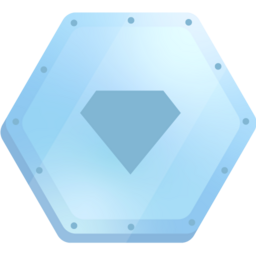Bryan Cashman
Member since 2024
Diamond League
9900 points
Member since 2024

This course introduces important topics of AI privacy and safety. It explores practical methods and tools to implement AI privacy and safety recommended practices through the use of Google Cloud products and open-source tools.
This course introduces concepts of AI interpretability and transparency. It discusses the importance of AI transparency for developers and engineers. It explores practical methods and tools to help achieve interpretability and transparency in both data and AI models.
This course introduces concepts of responsible AI and AI principles. It covers techniques to practically identify fairness and bias and mitigate bias in AI/ML practices. It explores practical methods and tools to implement Responsible AI best practices using Google Cloud products and open source tools.
Complete the intermediate Inspect Rich Documents with Gemini Multimodality and Multimodal RAG skill badge to demonstrate skills in the following: using multimodal prompts to extract information from text and visual data, generating a video description, and retrieving extra information beyond the video using multimodality with Gemini; building metadata of documents containing text and images, getting all relevant text chunks, and printing citations by using Multimodal Retrieval Augmented Generation (RAG) with Gemini. A skill badge is an exclusive digital badge issued by Google Cloud in recognition of your proficiency with Google Cloud products and services and tests your ability to apply your knowledge in an interactive hands-on environment. Complete this skill badge course and the final assessment challenge lab to receive a skill badge that you can share with your network.
This course introduces Vertex AI Vector Search and describes how it can be used to build a search application with large language model (LLM) APIs for embeddings. The course consists of conceptual lessons on vector search and text embeddings, practical demos on how to build vector search on Vertex AI, and a hands-on lab.
This course is dedicated to equipping you with the knowledge and tools needed to uncover the unique challenges faced by MLOps teams when deploying and managing Generative AI models, and exploring how Vertex AI empowers AI teams to streamline MLOps processes and achieve success in Generative AI projects.
This course introduces Vertex AI Studio, a tool to interact with generative AI models, prototype business ideas, and launch them into production. Through an immersive use case, engaging lessons, and a hands-on lab, you’ll explore the prompt-to-product lifecycle and learn how to leverage Vertex AI Studio for Gemini multimodal applications, prompt design, prompt engineering, and model tuning. The aim is to enable you to unlock the potential of gen AI in your projects with Vertex AI Studio.
This course teaches you how to create an image captioning model by using deep learning. You learn about the different components of an image captioning model, such as the encoder and decoder, and how to train and evaluate your model. By the end of this course, you will be able to create your own image captioning models and use them to generate captions for images
This course introduces you to the Transformer architecture and the Bidirectional Encoder Representations from Transformers (BERT) model. You learn about the main components of the Transformer architecture, such as the self-attention mechanism, and how it is used to build the BERT model. You also learn about the different tasks that BERT can be used for, such as text classification, question answering, and natural language inference.This course is estimated to take approximately 45 minutes to complete.
This course gives you a synopsis of the encoder-decoder architecture, which is a powerful and prevalent machine learning architecture for sequence-to-sequence tasks such as machine translation, text summarization, and question answering. You learn about the main components of the encoder-decoder architecture and how to train and serve these models. In the corresponding lab walkthrough, you’ll code in TensorFlow a simple implementation of the encoder-decoder architecture for poetry generation from the beginning.
This course will introduce you to the attention mechanism, a powerful technique that allows neural networks to focus on specific parts of an input sequence. You will learn how attention works, and how it can be used to improve the performance of a variety of machine learning tasks, including machine translation, text summarization, and question answering. This course is estimated to take approximately 45 minutes to complete.
This course introduces diffusion models, a family of machine learning models that recently showed promise in the image generation space. Diffusion models draw inspiration from physics, specifically thermodynamics. Within the last few years, diffusion models became popular in both research and industry. Diffusion models underpin many state-of-the-art image generation models and tools on Google Cloud. This course introduces you to the theory behind diffusion models and how to train and deploy them on Vertex AI.